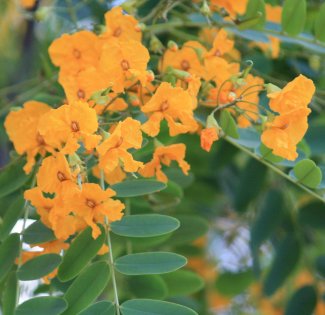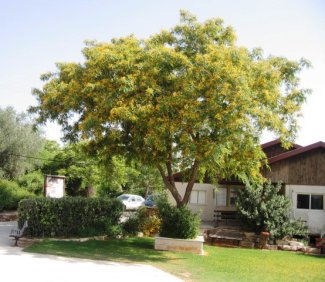Southern South America: Argentina - Jujuy, - Salta, - Tucuman Western South America: Bolivia
A shade tree that grows up to thirty meters in height and twenty meters. Leaves of the tree are pinnately compound, 10" (25cm) long, and made up of leaflets 1 to 3 inches (2 to 7 cm) long. Flowers are bright yellow in color and bloom only briefly in the late summer. Fruit is a legume (pod) with the seed at one end, resembling a samara. It is a deciduous tree, shedding all of its leaves and large "helicopter" seed packets from January–May each year. It produces masses of seeds, most of which succeed in germinating, and it can withstand a very wide range of growing conditions, from –4°C to salty soils to drought. Timber is whitish in color, strong and fibrous. Cut logs ooze resin which is blood-red. Rosewood has been planted all over the world as an ornamental street tree and garden plant. It is also valued as a shade tree, a source of ‘rosewood’ timber and, in some circumstances, fodder for stock
Planted for its ornamental, shade and cattle fodder value in Australia, rosewood has become a threat by escaping street and garden plantings into the natural environment.

